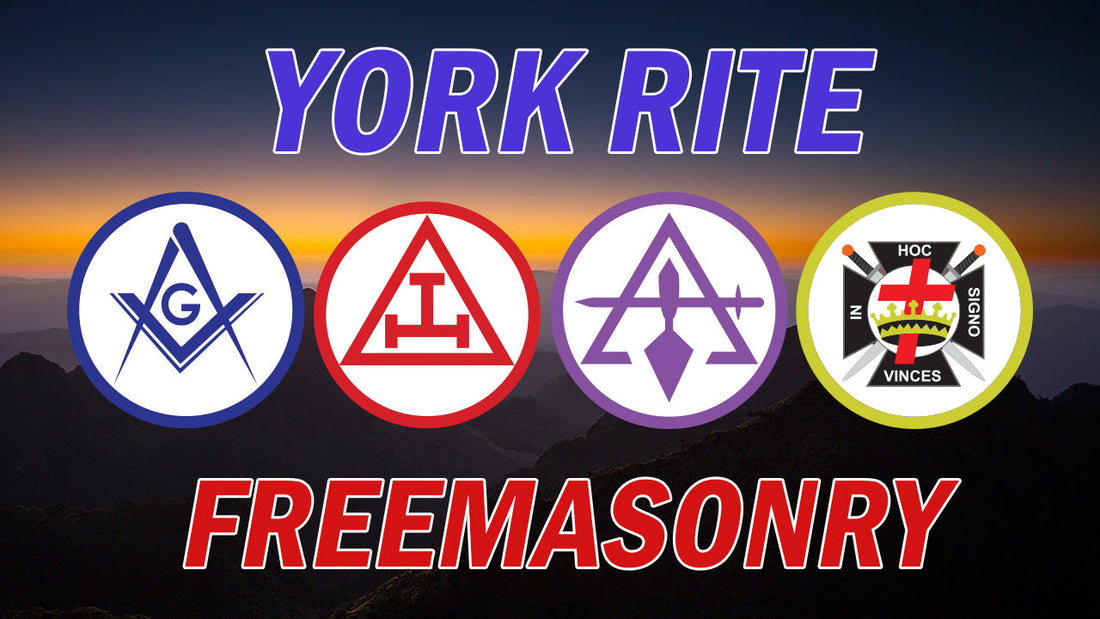
A Journey Through York Rite Freemasonry: Unlocking the Mysteries
Share
The York Rite Freemasonry: Unveiling a Legacy of Tradition and Degrees
York Rite Freemasonry stands as a testament to the rich tapestry of Masonic history, encompassing a collection of degrees and rituals that delve into the profound teachings and values of the craft. This branch of Freemasonry, distinct from others like the Scottish Rite, traces its origins to the historical city of York in England and has left an indelible mark on the Masonic journey.
The roots of the York Rite can be traced back to medieval times, with York serving as a historical hub for Masonic activity. The term "York Rite" itself is relatively modern, used to describe the collection of degrees that emerged from the English workings. Unlike the popular belief, it is not named after the city of York, Pennsylvania, but rather after the ancient city of York in England, where the first recorded Masonic documents originated.
The foundational elements of the York Rite include the symbolic Craft Lodge degrees, the Chapter degrees, the Council degrees, and the Commandery orders. Each component contributes to a comprehensive and interconnected narrative, offering Masons a more holistic understanding of the craft's teachings.
The York Rite's journey to the United States began with the arrival of Masonry itself. As Freemasonry took root in the American colonies, it brought with it the various traditions and degrees of the York Rite. One of the pivotal moments in the history of the York Rite in the United States was the establishment of the General Grand Chapter of Royal Arch Masons in 1797. This marked the formal recognition and organization of Royal Arch Masonry in the country, solidifying its place within the Masonic landscape.
The Chapter degrees of the York Rite, particularly the Royal Arch degree, hold a central position within the tradition. This degree fills in a critical gap within the narrative of the Craft Lodge degrees, providing a deeper exploration of the allegorical journey and adding layers of moral and spiritual insights. The Royal Arch degree is often seen as the heart of the York Rite, emphasizing the recovery of lost truths and the rewards of perseverance.
Another significant aspect of the York Rite is the Council degrees, which explore themes of leadership and governance. The Cryptic Masonry degrees, encompassing the Royal Master, Select Master, and Super Excellent Master degrees, offer lessons in both symbolic and historical contexts. These degrees delve into the legend of King Solomon's Temple and the preservation of valuable knowledge.
The Chivalric Orders, or Commandery orders, form the final layer of the York Rite. The Order of the Red Cross, the Order of Malta, and the Order of the Temple are examples of these orders, each drawing from historical and biblical narratives to impart virtues of chivalry, selflessness, and courage.
Throughout its history, the York Rite has faced challenges and fluctuations in popularity. It has, however, maintained its significance by preserving the core tenets of Freemasonry while adapting to the evolving needs of its members. One of the reasons for its enduring appeal is its emphasis on the journey of self-discovery and moral development, qualities that resonate across generations.
In the 19th and 20th centuries, the York Rite witnessed a period of expansion and organization. Grand Chapters, Councils, and Commanderies were established in various jurisdictions, bringing together Masons who shared a commitment to the teachings of the York Rite. These bodies played an instrumental role in promoting fellowship, education, and charitable activities.
As the 21st century unfolds, the York Rite continues to thrive. While the craft has experienced changes due to social shifts and technological advancements, the fundamental principles of the York Rite remain unwavering. The tradition's commitment to brotherhood, self-improvement, and charitable endeavors continues to attract Masons seeking a deeper connection to the craft's timeless wisdom.
In conclusion, the history of York Rite Freemasonry is a journey of preservation, adaptation, and enlightenment. From its beginnings in the medieval city of York to its spread across the Atlantic and its enduring impact on American Masonry, the York Rite stands as a testament to the profound teachings and allegorical narratives that define Freemasonry. As Masons continue to gather in lodges, chapters, councils, and commanderies, the legacy of the York Rite lives on, weaving together the threads of tradition, symbolism, and personal growth.
